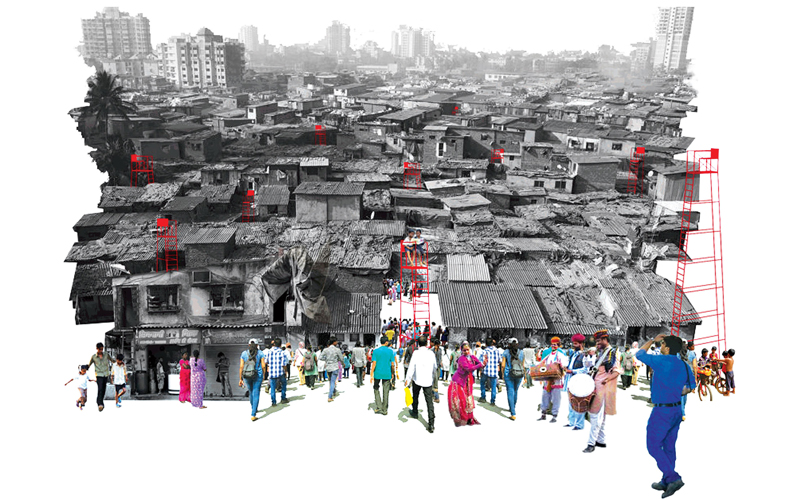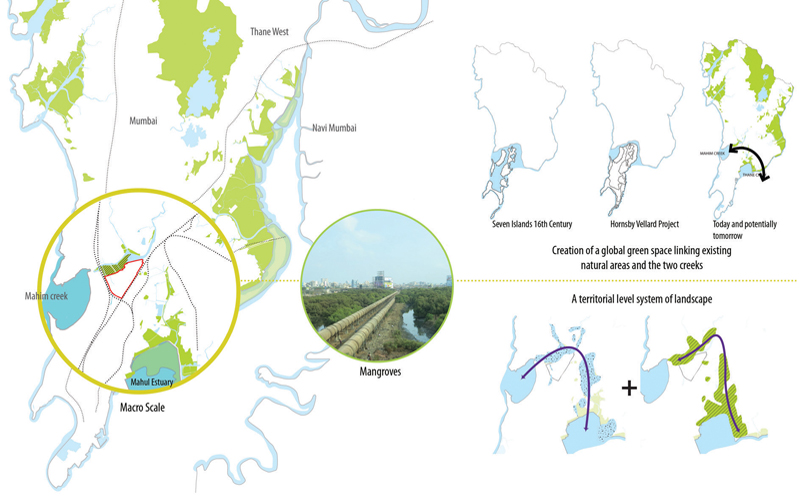Cities
Inclusive Neutrality: An Urban Democracy and Landscape Planning Strategy to Reinvent Dharavi | Amrita Madan and Priyanka Jain, Inclusive Neutrality Team
LA 45 |
|
| A prize winning entry from the 2014 competition that aimed towards reinventing Dharavi- a slum in Mumbai. This propoal focuses on the philosophical, social and spatial needs by looking at three areas- the actual Dhravai region, the larger city of Mumbai and the space where both of these intersect. It links the natural features of the site against the backdrop of the Dharavi Festival and respects the intrinsic values and beliefs of the citizens. |
|
 |
|
Year 2014 saw the launch of the competition Re-inventing Dharavi by the Urban Design Research Institute (UDRI) to generate new ideas and reinstate the dialogue around the rehabilitation in Dharavi, Mumbai. The 'Inclusive Neutrality' proposal, conceptualized by an Indo-French collective, sought to reimagine the public realm of Dharavi through the lens of ecological harmony and improved access to basic services.
With an array of problems affecting our cities - lack of clean water, sanitation, land tenure and health care - the need for an improved public realm in urban renewal may not seem like a priority. Emerging examples of community-based planning can teach us the value of investing in existing social relationships in communities, and help us promote the ecology of our cities. Rather than proposing another project for Dharavi, Inclusive Neutrality, challenges city planning conventions by developing a user-generated process for placemaking.
Envisioned by a multidisciplinary team of landscape designers, architects, urban planners, engineers, philosophers and social scientists, the proposal makes a case for the Dharavi Festival - an imaginative and innovative approach to redevelop our cities with its inhabitants as its principal actors. Entwined into the ideas of inclusiveness, neutrality and the Dharavi Festival, is the percept that landscape is an expression of the natural history and heritage of the region. Urban fabric, public space, economic development and architecture are all entities that inform the social and spatial strategies of the proposal.
|
|


|
|

|
|
|
|
|